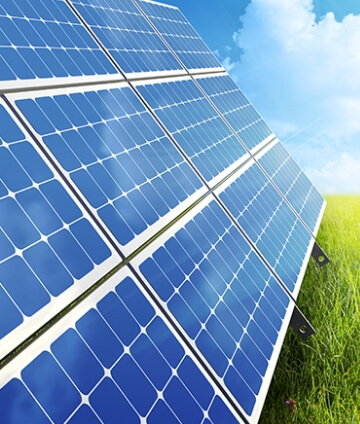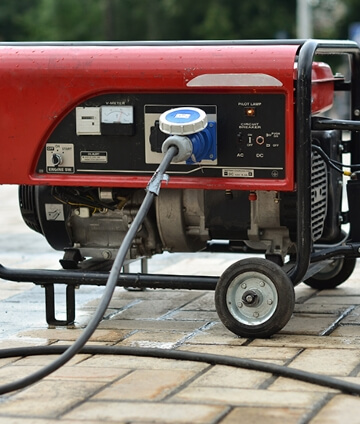-
Residential
Everything we do is for the benefit our members. We’re proud to provide a wide variety of products and services for your home, helping you save time, money, and energy.
-
Business
Everything we do is for the benefit our members. We’re proud to provide a wide variety of products and services for your business, helping you save time, money, and energy.
-
Contractors
Contractors
We’re dedicated to helping our members make smart energy usage decisions. We offer many informational and educational resources, programs and incentives, and energy-efficiency rebates for both business and residential members.
-
Clean Energy & EVs
Clean Energy & EVs
As part of our strategic initiatives, we are committed to environmental leadership. Pursuing renewable energy alternatives and giving members the choice to support those initiatives is the right thing to do. With a wide variety of commercial and residential programs, we will partner with you in your efforts to go green, whether at home or at work.
-
Company
Based in Ramsey, Minnesota, Connexus Energy is Minnesota’s largest electric cooperative, providing electricity and related products to member residents and businesses. The Connexus Energy Board of Directors, elected by our membership, governs the electric cooperative. We serve more than 145,000 members in portions of Anoka, Chisago, Hennepin, Isanti, Mille Lacs, Ramsey, Sherburne, and Washington counties.
- Residential
- Business
- Contractors
- Clean Energy & EVs
-
Company
- About Us
- The Connexus Energy Foundation
- Safety
- Careers
- News Center
- Connexus Newsroom
- Newsletters
- Events
- Modern Heating with Electricity
- Anoka Halloween Grande Day Parade
- Board of Director Candidate Application Portal Opens
- Board of Director Candidate Application Portal Closes
- Annual Connexus Energy Legislative Forum
- Annual Meeting
- Grid Innovation & Community Resilience: Minnesota's Clean Energy Pathways
- Andover Area Damage Prevention Meeting
- Sponsored Event: Northern Stars Celebration
- Sponsored Event: Fiesta Gala
- Sponsored Event: Hope Gala Masquerade Ball
- Connect the Dots - Where Education Meets Industry
- Connexus Energy Board of Directors Meeting
- Connexus Energy Board of Directors Meeting
- Connexus Energy Board of Directors Meeting
- Connexus Energy Board of Directors Meeting
- Connexus Energy Board of Directors Meeting
- Connexus Energy Board of Directors Meeting
- Connexus Energy Board of Directors Meeting
- Connexus Energy Board of Directors Meeting
- Connexus Energy Board of Directors Meeting
- Connexus Energy Board of Directors Meeting - Executive Session (proprietary)
- Connexus Energy Board of Directors Meeting
- Ramsey Business Expo
- Sponsored Event: Real Stories Gala for Stepping Stone
- Sponsored Event: Achieve Services Spring Gala
- Sponsored Event: Hope-4-Youth Gala
- Media Contacts
- Top 5 Highlights
- Connexus Newsroom
- Economic Development

Foreign Attachment
Foreign Attachment
The safety and reliability of the Connexus Energy electric system is everyone’s concern. Failure of the overhead support systems impacts both electrical reliability and public safety.
Connexus does not allow members or other individuals to attach to facilities. To allow for improved utilization of the public right-of-way, an exception is made for other utilities such as telephone or cable to attach cables and other equipment to Connexus Energy poles. The utilities’ equipment and trained employees allow them to safely work on these attachments.
Pole Attachment Requirements
Pole attachments must:
- Not interfere with regular operation of the Connexus Energy distribution system.
- Be installed and operated according to the applicable right-of-way, ordinances, and permitting requirements.
- Be installed and operated in accordance with the National Electric Safety Code (NESC).
- Be coordinated with and approved in writing by Connexus Energy prior to installation.
Pole attachment process
A pole attachment agreement is required prior to installation of any attachments. If the utility does not have a pole attachment agreement with Connexus, contact the Group Leader - Distribution Design to establish one.
Once a pole attachment agreement is in place, permission and coordination of the installation of communication equipment on Connexus-owned facilities can be obtained by contacting the joint use designer. Connexus will conduct an analysis of available pole space, the ability to support additional loading, clearance calculations, and identification of required changes.
An application filed with Connexus is required to begin the process. Additional information is necessary to complete a pole strength analysis. Please refer to the Pole Attachment Application Submittal Requirements for information.
A maximum of 100 attachments are allowed per application. Field data sheet(s) and other required information must be attached with the application, along with a $250 application fee.
Pole Attachment Application
Pole Attachment Data Sheet
Data Sheet Example
Permits and easements
The utility requesting attachment is responsible for all city, county, and/or state permits and easements, including any associated fees. In all situations, prior permission must be obtained from property owners and governmental entities for use of private property and public road rights-of-way. Connexus assumes no responsibility for securing such required permission, and the utility requesting attachment should assume that no such permission exists based solely on the presence of existing Connexus facilities.
Overlashing existing cables
Overlashing of existing cables will change the weight and potential ice loading for an existing attachment, and as such requires updated analysis. Overlashing shall be treated like a new attachment, including full analysis and reporting requirements.
Pole attachment technical requirements
The following technical and design requirements shall be followed for any joint use attachment to Connexus facilities. Joint use attachments that do not follow these requirements must be modified or removed.
- Communication cables shall use their own guy(s) and anchors. Use of the Connexus anchoring system is not permitted.
- Anchors and guys shall be installed at all dead ends and at line angles.
- Anchors and guys shall be in line with the strain at the dead ends. Bisector guys shall be installed at all line angles.
- Anchors and guys shall be installed where the cable has been temporarily dead-ended (for example, when construction has ceased at the end of the working day or for the weekend). Sidewalk guys or push poles shall not be used on Connexus poles to guy communications attachments at angles or dead ends.
- Anchors shall be installed according to manufacturers’ recommendations and utility industry practices.
- Anchors shall be installed so that there is at least a five-foot separation from Connexus anchors.
- At all dead ends and angles, the anchors and guys shall be installed before the cable is pulled up and sagged in.
- Communication cables must be installed without the use of extension arms, standoff brackets, or similar hardware (unless approved in advance by Connexus per pole for specific installations).
- Communication cables must be installed on the same side of the poles (typically the road side) as other attachments. Pole attachments to both sides of the same pole are not permissible.
- The communication cable messenger (strand) shall be bonded to all Connexus pole grounds.
- All riser cables shall be installed in conduit, U-guard, or otherwise protected.
- No mid-span or flying tap connections of any type are allowed.
- All attachments shall comply with NESC clearance requirements and shall be located a minimum of forty (40) inches below Connexus Energy's lowest attached facilities. All mid-span clearances between communication facilities and the lowest conductors of Connexus facilities shall comply with NESC clearance requirements.
- The overhead line with communication attachments must meet a minimum of Grade C construction as defined by the NESC. This may, in some cases, require Connexus to inter-set poles in-line or replace existing poles with stronger ones. Connexus will not allow communication companies to inter-set their poles in Connexus Energy's primary or secondary lines.
- Attachments shall not encroach into the communication worker safety zone, even at road crossings.
- All power connections to communication equipment shall have a disconnecting means and be protected with an approved fuse and/or breaker. No service connections shall be made without the installation of an approved fused service disconnecting switch or breaker. For unmetered services, the disconnecting device must be accessible at all times by Connexus personnel.
- No bolts installed on a Connexus pole for joint use attachments shall extend or project more than one inch beyond its nut.
- All attachments shall have at least twelve inches of separation from other utilities’ communication attachments.
- All attachments shall be tagged with company name using a colored tag. Identification tag must:
- Be attached directly to the communication cable, messenger, or cable clamp.
- Be attached within 1 foot of the pole.
- Not be attached directly to the pole.
- Be attached to allow the identification code to be visible from the street.
- To facilitate Connexus Energy's notification to attaching utilities in emergency situations, all antennas and all related boxes and equipment shall be identified with the following information:
- The attaching utility’s generally recognized business name.
- An emergency telephone number.
your most powerful membership®
These four words focus on the most important component of our cooperative: our members. In a cooperative, everything we do is for the benefit of our membership. This vision provides daily inspiration to build powerful partnerships with our members.

Contact Connexus Energy
Get in touch with Connexus Energy. Call, email, stop in, or fill a form with your questions and feedback.




